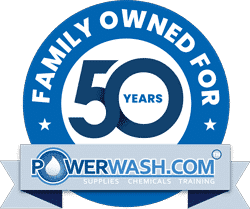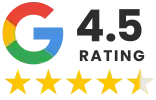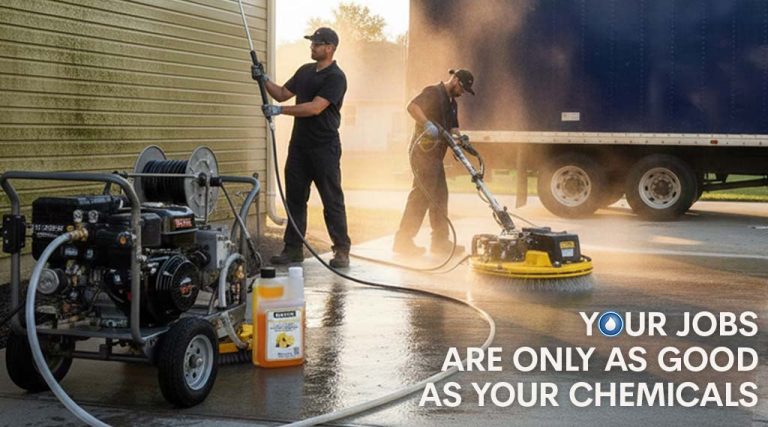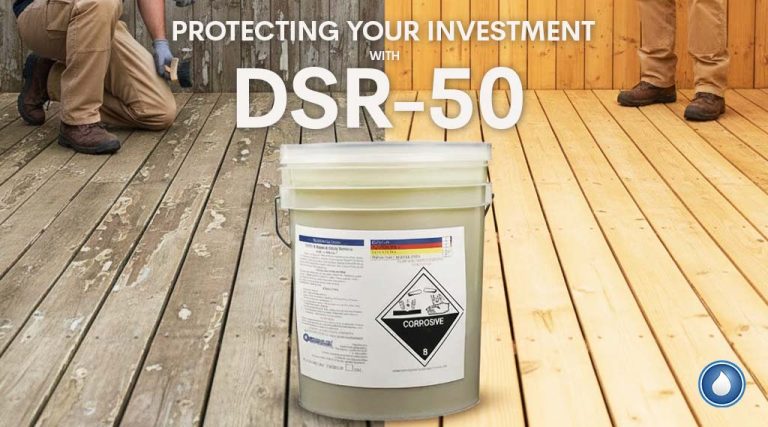The Science Behind Effective Power Washing
The science behind power washing is a balance of pressure, water, and chemical solutions working together to achieve the most effective clean. At its core, the process uses high-pressure water to dislodge dirt, grime, and contaminants from surfaces, while the addition of specially formulated chemicals enhances the cleaning power by breaking down tough stains like oil, mildew, and mold. The pressure alone is often not enough to fully remove these substances, but with the right chemical agents, even the most stubborn buildup can be dissolved. This combination allows for efficient and thorough cleaning, particularly in commercial or industrial settings where larger areas need attention.
The Role of Pressure and Chemical Solutions in Cleaning
However, it’s crucial to approach power washing with care. One common mistake is applying too much pressure without considering the surface being cleaned. High pressure on delicate surfaces like wood or painted areas can cause permanent damage, such as gouging or stripping away the finish. Similarly, using the wrong chemicals, or an excessive amount, can corrode materials or leave behind residues that could harm the environment. Understanding the right combination of pressure and cleaning agents is key to avoiding costly damage and ensuring the longevity of the surface being cleaned.
Balancing Pressure and Chemicals for Safe, Efficient Results
For contractors and professionals looking to provide cost-effective cleaning solutions, efficiency is everything. This means using the correct pressure washer settings and appropriate chemical mixtures for the job at hand. Pre-treating surfaces with chemicals reduces the amount of time and water needed, minimizing both the labor and resources involved. Additionally, having the right equipment and maintaining it well prevents breakdowns and delays, further lowering costs. Smart planning, such as targeting the toughest areas first, can help a cleaning job be completed faster and more effectively, making the best use of both time and materials.
When it comes to power washing, the right chemicals can make all the difference, allowing you to effectively clean a wide range of surfaces and tackle tough stains without causing damage. Here are some common chemicals used in power washing, along with their recommended applications:
1. Sodium Hypochlorite (Bleach)
- Best for: Mold, mildew, and algae removal on hard surfaces like concrete, stone, and vinyl siding.
- How it works: Sodium hypochlorite is a powerful disinfectant and stain remover that breaks down organic growth like mold and mildew. It’s often mixed with surfactants to enhance its cleaning ability and ensure even coverage.
- Important note: It can be harsh on plants and surrounding vegetation, so always rinse the area thoroughly after using, and avoid overuse on softer surfaces like wood.
2. Sodium Hydroxide (Caustic Soda)
- Best for: Oil, grease, and tough grime, especially on concrete driveways, garages, or industrial areas.
- How it works: Sodium hydroxide breaks down fats, oils, and grease effectively, making it ideal for degreasing surfaces. It’s commonly used in industrial power washing.
- Important note: This chemical is highly corrosive, so care should be taken when applying it. Proper dilution is essential, and protective gear like gloves and goggles are a must.
3. Oxalic Acid
- Best for: Rust removal, stain lifting from wood, and revitalizing weathered wood surfaces (e.g., decks or fences).
- How it works: Oxalic acid is a gentle but effective cleaner for rust and other mineral stains. It’s also commonly used to restore the natural color of wood after it has been cleaned of dirt and grime.
- Important note: While it’s generally safe on wood, always test a small area before applying to ensure it won’t cause discoloration.
4. Citric Acid
- Best for: Light cleaning, removing mineral deposits, and brightening surfaces like stone, concrete, and even metal.
- How it works: Citric acid is a mild cleaner that can be used to break down light organic growth, mineral deposits, and rust without being too harsh on the surface. It’s environmentally friendly and safe for use around plants.
- Important note: While it’s gentler than many other chemicals, it might not be strong enough for very tough stains.
5. Surfactants and Detergents
- Best for: General cleaning and enhancing the effectiveness of other chemicals.
- How they work: Surfactants help break the surface tension of water, allowing chemicals to penetrate grime more easily. Many detergents are mixed with other agents like bleach or caustic soda to provide a comprehensive cleaning solution.
- Important note: Surfactants alone won’t break down tough stains, but they improve the overall cleaning process by making it easier for water and chemicals to spread across and adhere to the surface.
6. Ammonium Bifluoride (ABF)
- Best for: Cleaning brick, stone, and masonry without damaging the surface.
- How it works: ABF is a safer alternative to hydrofluoric acid for cleaning masonry, as it effectively removes mineral deposits, grime, and efflorescence without causing excessive surface damage.
- Important note: Use with caution, as it can still pose health risks if not handled properly. Always wear protective gear when applying it.
Environmental and Safety Considerations
- Always follow the manufacturer’s guidelines for chemical dilution and application.
- Use biodegradable and eco-friendly chemicals whenever possible, especially if power washing near plants, waterways, or sensitive areas.
- Proper disposal and neutralization of chemicals after the cleaning process are crucial to prevent environmental harm.
By selecting the right chemical for the specific surface and stain, you can significantly enhance the efficiency of your power washing efforts while minimizing the risk of damage.
In conclusion, the science behind power washing is all about balance: applying enough pressure to remove grime while using the right chemical agents to break down stubborn stains, without causing damage or environmental harm. For those looking to complete contract jobs efficiently, understanding this balance ensures not only great results but also cost savings. By focusing on the right techniques, tools, and chemical combinations, professionals can offer top-tier services that meet client expectations while safeguarding their business reputation.





